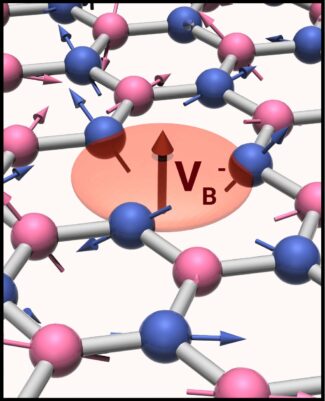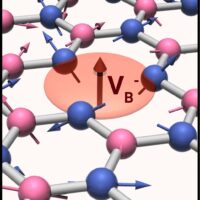News
Spin defects in two-dimensional van der Waals materials have recently garnered significant interest, particularly for their potential as quantum sensing platforms due to their sub-nanometer proximity to the sample being probed. Among these, the negatively charged boron vacancy (VB-) centers in hexagonal boron nitride (hBN) have been actively studied for their room-temperature optical polarizability and spin properties, like the well-established nitrogen-vacancy centers in diamond. However, many intrinsic properties of VB- defects remain unknown, and a deeper understanding is essential to fully realize their advantages as a quantum platform. In this work, we investigate the photo-induced spin dynamics of VB- defects and predict a near-unity electronic spin polarization, highlighting their potential for quantum simulations.
We develop a semiclassical rate model based on a series of measurements probing both ground and excited spin dynamics. This model provides a comprehensive understanding of the intersystem crossing (ISC) rates in the excited state and predicts an exceptionally high electronic spin polarization (p > 95%). Building on this rate model, we incorporate the nuclear spins of adjacent nitrogen nuclei to develop a full Lindbladian model. Since the surrounding nuclear spin bath is the primary source of the VB- decoherence, a detailed understanding of nuclear spin polarization dynamics is essential. Our Lindbladian simulation captures key aspects of such spin dynamics, particularly near level anti-crossings, where hyperfine interactions strongly influence VB- polarization. These predictions were confirmed in our experiments, offering valuable insights into the polarization of the surrounding nuclear spins.
Our investigation of VB- spin dynamics predicts near-unity electronic spin polarization at room-temperature, surpassing other ambiently polarizable spin defects. This highlights the potential of VB- ensembles as an outstanding platform for quantum simulation. Moreover, the exceptionally high electronic spin polarization suggests the possibility of achieving significant nuclear spin polarization, which could substantially reduce decoherence effects from the nuclear spin bath and enable nuclear spins to serve as robust quantum registers.

Figure: schematic depicting the structure of the VB- defect in hBN.
